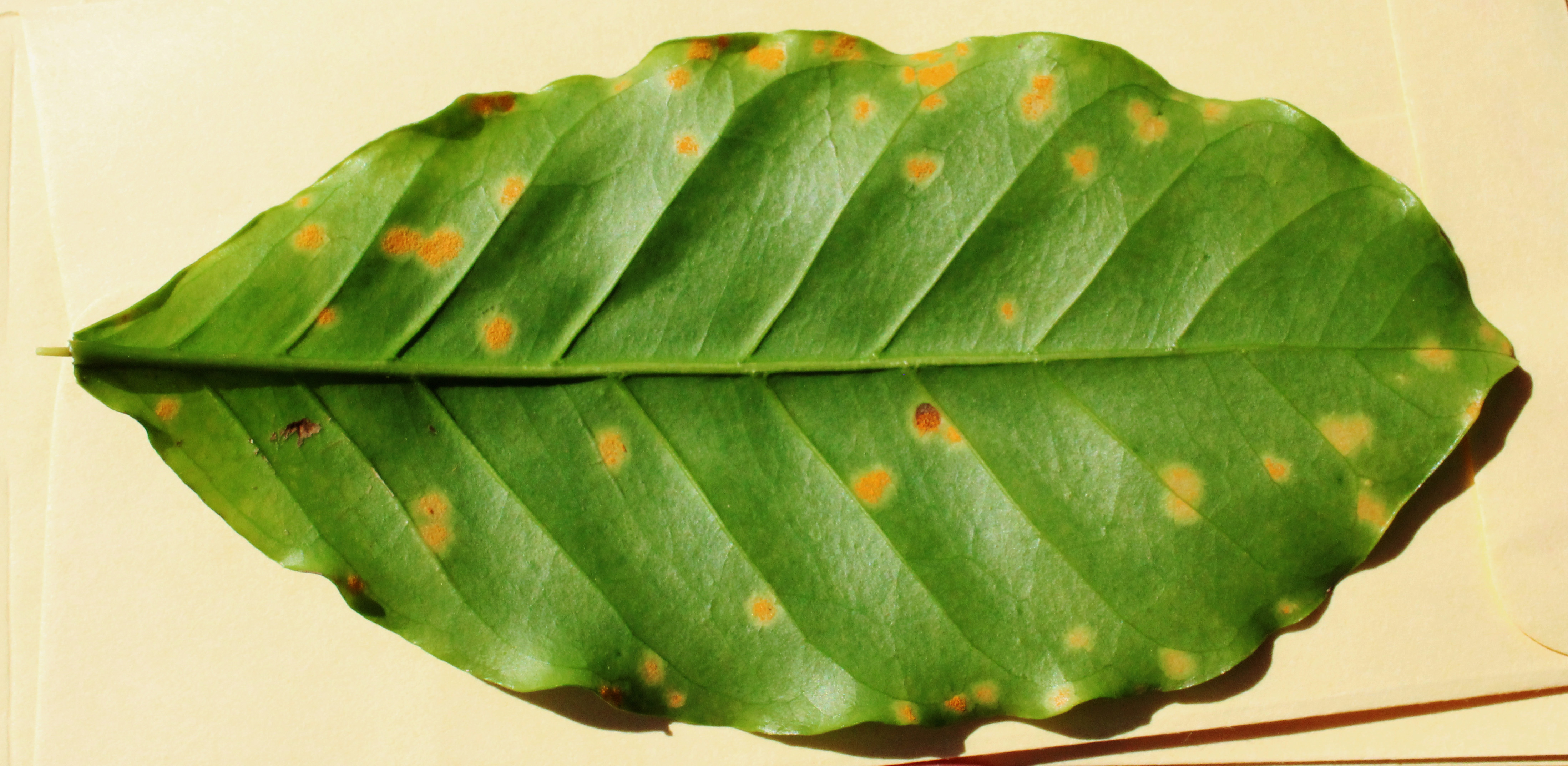Coffee Leaf Rust
This image shows uredosori or coffee leaf rust spreading out on the underside of a coffee leaf. Photo by Tim Williams, Image used with Kind Permission or World Coffee Research.
The fungi Hemileia vastatrix infects the undersides of the leaves of coffee plants, where it produces large, rust-coloured colonies of uredosori — a nice way of saying ‘pustules’. (See image above.) An outbreak of rust leads to the premature loss of leaves, drastic losses of yields, and, often, total crop failure. The first recorded outbreak of leaf rust occurred in 1861 near Lake Victoria (Silva et al., 2006), and in 1868 a huge outbreak of the fungi in Sri Lanka brought about an almost complete shift to growing tea instead of coffee on the island. Leaf rust has since spread throughout every growing region and is generally considered to be the pathogen that most drastically threatens the survival of coffee.
Timeline of the Spread of Coffee Leaf Rust (Koehler, 2018)
The epidemic struck Central America for the first time in 2011–2012. Within a year the blight had spread across the region, affecting 70 percent of farms. Over 1.7 million coffee workers lost their jobs, and US$3.2 billion in damages and lost income resulted. The effect was so severe that some families gave up farming coffee altogether (World Coffee Research).
How Infection Occurs
Coffee leaf rust is classified as a biotrophic fungi. These fungi are totally dependent on living plant cells for their survival. The fungi attack the undersides of leaves. They first grow inside the stoma (pores) of a leaf in a shape that resembles an anchor (see diagram 1F, below). From this ‘anchor’, the fungi begins to produce hypha. In fungi, hypha are the equivalent of a tree’s roots. From the main stems of the hypha extend little tendrils known as haustoria.

